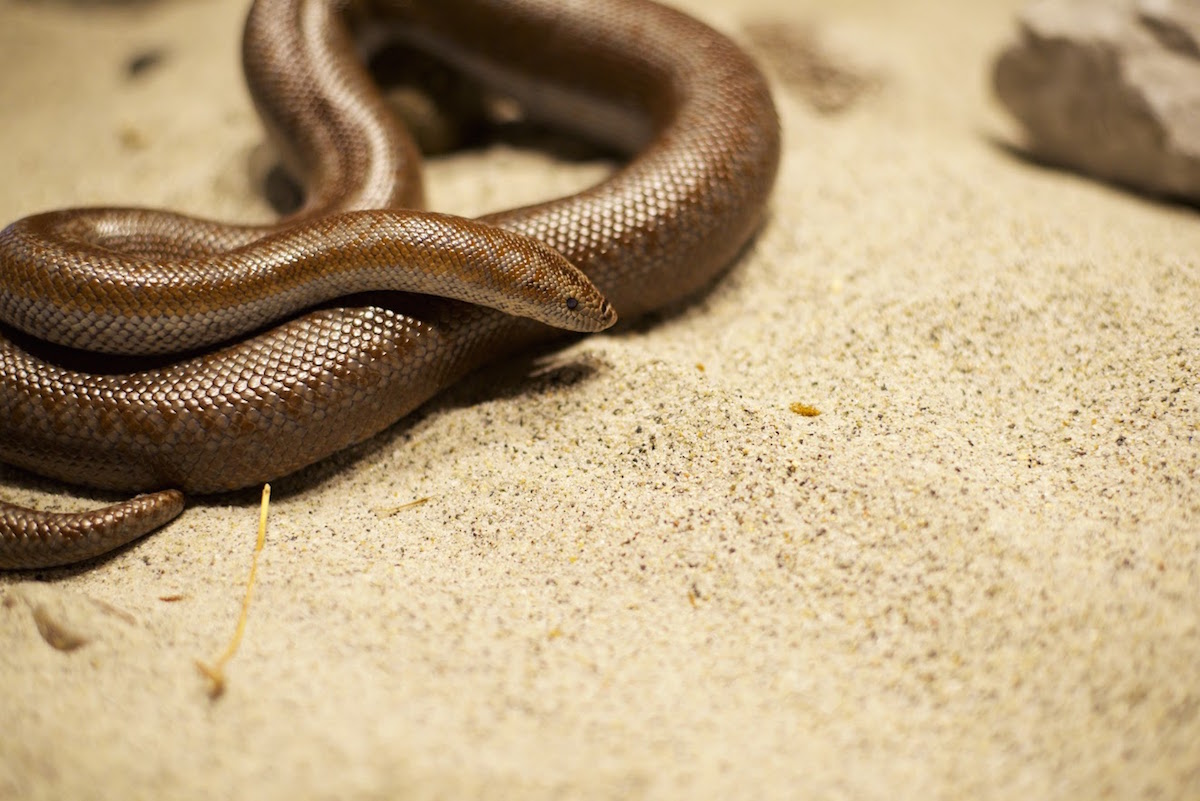Rosy Boa Snakes
Species: Lichanura trivirgata
Range: Southwestern United States, including Arizona and southern California, Baja and Sonoran Mexico
Habitat: Being a sand boa, they live in very rocky, dry habitats. Spend most of their time avoiding heat by hiding in crevices and underground; great at burrowing.
Diet: Mostly small mammals, like pack rats, deer mice, and kangaroo rats, sometimes lizards or small birds.
Size: They average about 3 feet; up to 6 feet in parts of Coastal California
Lifespan: The rosy boa can reach 15-20 years in the wild, 30 or more years in captivity.
Baja
Baja came to Turtle Bay in December 2011 as a sub-adult.
Fun Facts
• The rosy boa is one of only two species of boa found in the US…the other being the rubber boa that is found here in Northern California.
• Rosy boas are active at different times depending on the time of year. During the hot summer they are mostly nocturnal, in the spring and fall when it is warm but not hot during the day they are diurnal, and then during the winter they brumate. If it is dry, they burrow underground where the sand is moist.
• They have a mono-shaped body; the head and tail are blunt. This aids in confusing a predator of which way the head is for protection and it makes burrowing easier.
• Their species name trivergata refers to the three stripes they have going down the length of their body. On some individuals the stripes are very bright, on others they are dull.
• The most common type of hiding spot where rosy boas are found is under granite outcroppings. Therefore human disruption of this natural resource is a major struggle this species faces, similar to our mountain kingsnake.
• The pet trade is the number one threat to these snakes, and they are a protected species under the Federal Special Concern act and by CITES (Convention on the International Trade of Endangered Species.)
• Their main defensive behavior is to ball up with their head protected in the middle and excrete musk.


